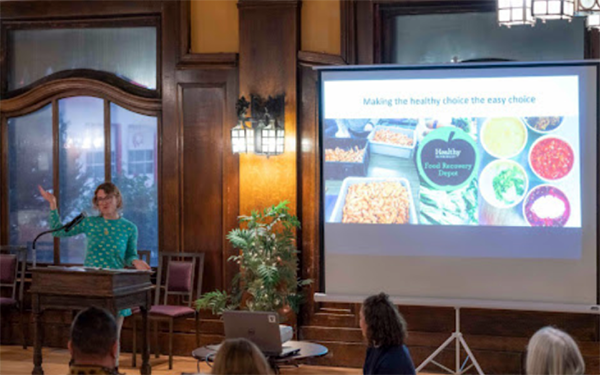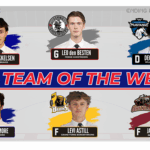Home »

IH partners with United Way to support food security
Food security is top of mind for many people and communities right now.
Over the past three years, the COVID-19 pandemic, heat domes, wildfires, floods, inflation, and the rising costs of food have contributed to food insecurity. While all of these factors have been overwhelming, communities are coming together to prove their resilience and are building stronger relationships in response.
In 2021, United Way of BC (UWBC) was looking to support and build on these connections and approached folks across many communities to establish its Regional Community Food Hub program. Seeing the work being done by UWBC, Interior Health (IH) reached out to support the Regional Community Food Hubs across the region.
Interior Health’s Public Health Dietitian team has entered a three-year pilot project to provide UWBC with Community Food Action Initiative funding to enhance the food security program. This collaboration allows everyone to work towards common goals, streamline funding, and build a larger pot of money for greater sustainability.
One example of this successful partnership are the food hubs in the East Kootenay. For many years, a number of dedicated organizations and community members from Kimberley and Cranbrook have been working on food security. But thanks to UWBC, their actions and relationships have developed even further. With this support, the Kimberley Cranbrook Food Hub (KCFH) began.
Over the past two years, the KCFH has brought people and organizations together to build relationships, make connections, and find synergies. Organizations like Cranbrook Food Recovery, Healthy Kimberley Food Recovery Depot, and Kimberley Helping Hands Food Bank are involved in this network.
Through these connections, organizations in the region have improved efficiency by refining processes and avoiding duplication—an important consideration when trying to meet growing demand—allowing the KCFH to stride towards their goal of getting more food to more people.
“I am grateful for the opportunity to meet regularly with the amazing people working on food security projects in our region,” shared Sophie Larsen from Cranbrook’s Farm Kitchen. “I often feel that our most meaningful work is not on the agenda, but in what happens at the edges of our meetings: making official community plan recommendations, applying for collaborative grant applications, and sharing new ideas.”
Bringing together community organizations
Not only has the KCFH improved efficiencies in services, but they have also developed several projects and initiatives over the past two years:
- Developed an online Food Asset Map;
- Held a mini food summit;
- Started the Plant a Rowinitiative;
- Strengthened the Farmers Market Nutrition Coupon program in the region.
While the Kimberley Cranbrook Food Hub has seen successes, there are still challenges. Funding is an uncertainty, with most grants provided in one-year terms, and never guaranteed for renewal.
Bringing together many community groups who have been working separately for so long can also prove challenging, as groups negotiate a shared vision. But the Regional Community Food Hub program has overwhelmingly allowed organizations in Kimberley and Cranbrook to support one another to do better in each of their roles.
Future plans include strengthening relationships with local farmers and the community at large, supporting School Districts No. 5 and No. 6 with the Feeding Futures program, and building relationships with local Indigenous communities.
Lead image: Shannon Grey Duncan, coordinator at Healthy Kimberley Food Recovery Depot, is seen here presenting at the Cranbrook History Centre on sustainable food systems. Interior Health photo
Interior Health







